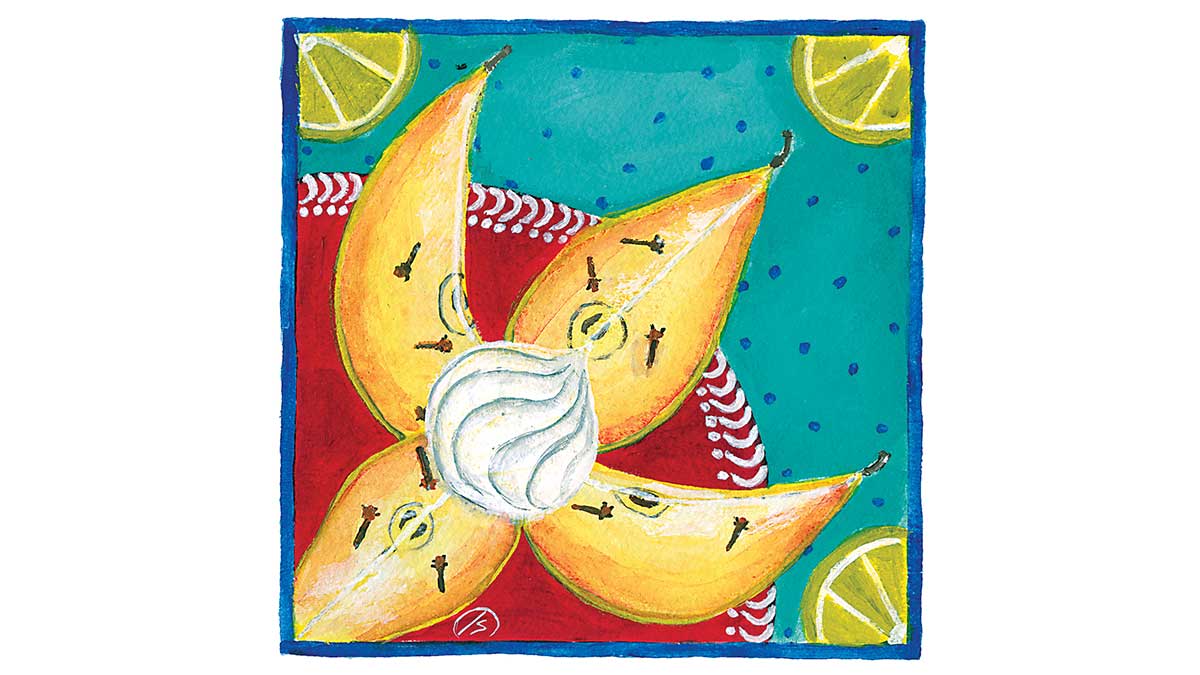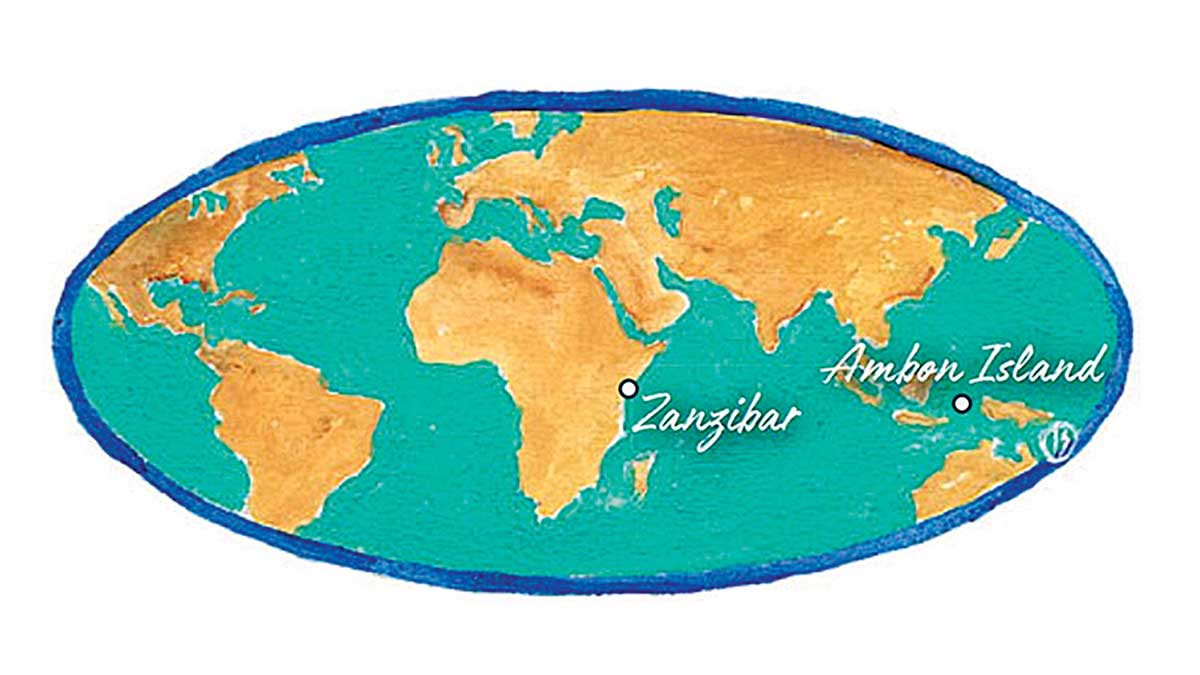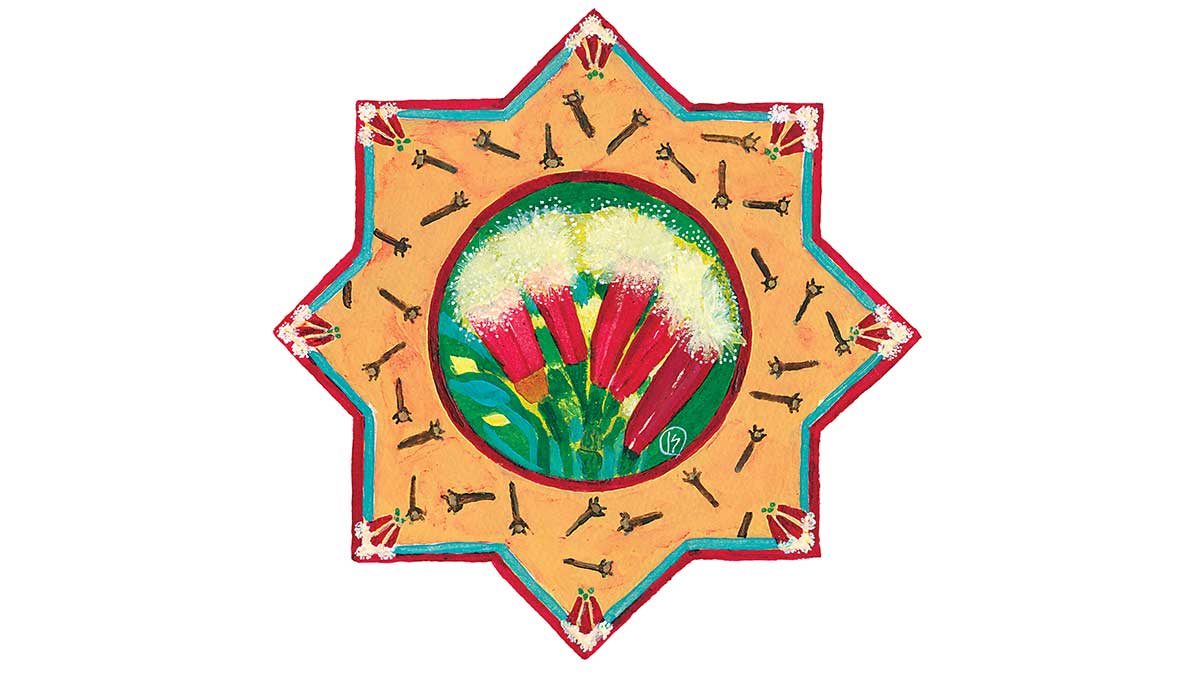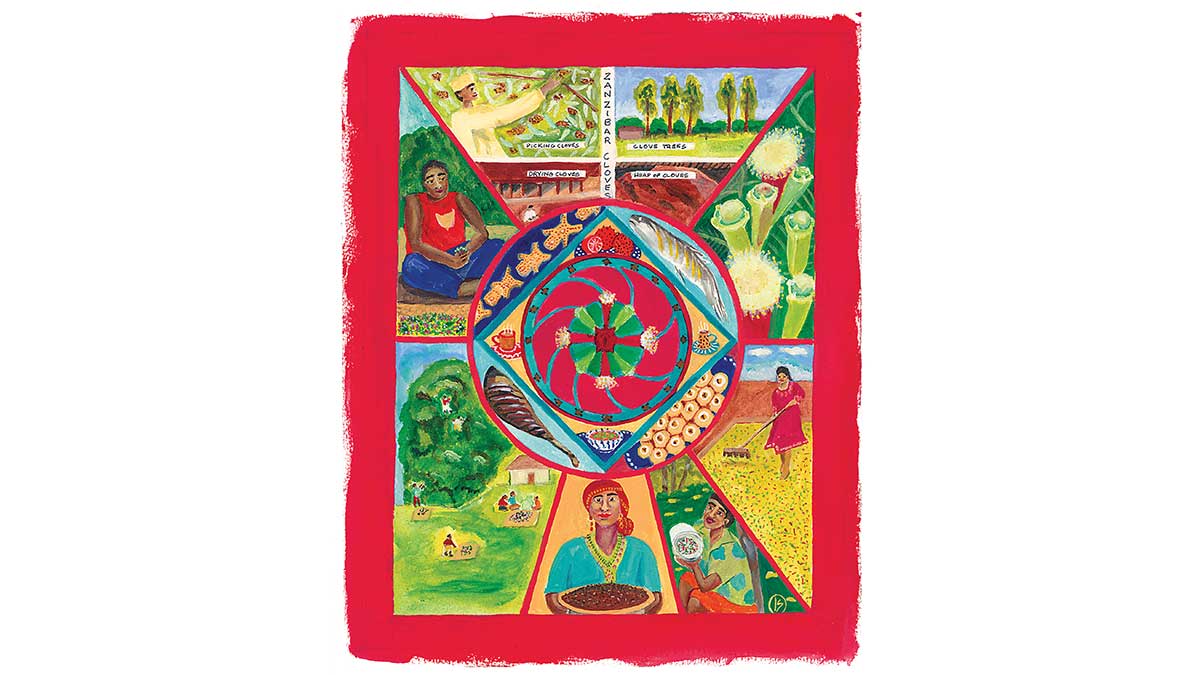Aramco World
Spice Migrations: For the love of cloves

Global December 22, 2021
A rich history of the migration of spices in the region.
At the end of the 19th century, the East African archipelago of Zanzibar was the capital of cloves. Ninety percent of the world’s cloves grew there. People used cloves for numbing a toothache, seasoning a biryani or pulao rice dish or even for stringing into an ornamental, aromatic necklace. According to sailor lore, when the wind was right, it carried the scent of cloves far out into the waters of the Indian Ocean.
Like a gentle breeze of the east
wind arriving with the sweet smell of cloves.
—Imru’ al-Qays, sixth century CE

A bud of many names
Cloves are the dried and unopened flower buds of a species of evergreen tree, genus Syzygium and — no surprise here — family aromaticum. In Swahili-speaking Zanzibar, they are called karafuu, which comes from both the Arabic qaranful and the older Greek karuóphullon, meaning “nut leaf.” Latin, however, looked straight at its shape and dubbed it clavus — nail — from which we have “clove” today in English.
Zanzibar farmers harvest karafuu in September, October, and November by gently picking the buds, which grow in clusters of 10 to 15 on trees that can reach as high as 15 meters, requiring nimble climbing.
But Zanzibar is not where cloves originated. It is perhaps just a curious coincidence the sixth century CE Arab poet Imru’ al-Qays, quoted at the top of this article, wrote of cloves’ “sweet smell” coming on an “east wind,” for indeed it was then that cloves grew exclusively on islands 10,000 km due east of the Arabian Peninsula.

The spice of courtiers
The actual source lay amid the same volcanic islands in the modern Indonesian province of North Maluku that is also the origin of nutmeg. Also known as the Moluccas or the Spice Islands, North Maluku is an archipelago made up of some 1,000 islands.
“Clove was already well-known in Arabia in the seventh century,” explains translator and scholar Charles Perry. Referencing the line in the famous ode by al-Qays, he points out that “this quote fails to prove that clove was being used in cookery rather than perfumery, but I have little doubt that it was.” In the 10th century CE, the Iraqi Ibn Sayyar al-Warraq listed cloves in Kitab al-Tabikh (The Book of Cookery), the earliest known Arabic cookbook.
With the founding of the Sultanate of Malacca in 1403 CE, the port of Melaka, in present-day southwestern Malaysia, began attracting more merchants carrying spices, including cloves. The spice trade attracted Arabs, Javanese, and Chinese, among others around the Indian Ocean and beyond. The market prospered on these terms until European ships sailed in, looking to exploit the valuable commodity.
The Portuguese in 1522 became the first Europeans to set up forts on those Malukus that grew cloves, followed by the Dutch in the early 17th century. On the island of Ambon, where cloves grew, the Dutch Vereenigde Oost-Indische Compagnie (VOC), decreed that cloves could only be grown on Ambon and enforced a policy of extirpatie (extirpation): All trees not controlled by the VOC were destroyed.
Zanzibari Arab Harmali bin Saleh, in 1812, introduced cloves from Réunion and set up clove plantations. His plantations were confiscated by the sultan, Said bin Sultan of the Sultanate of Muscat and Oman, whose realm included Zanzibar. The clove industry flourished even more when the sultan promoted its expansion to supplant the slave trade, Ian Hemphill, author of The Spice & Herb Bible, points out.
Zanzibar dominated the world market until 1964 when revolution led to its merger with what is now Tanzania.
Spotting opportunity, Madagascar and Indonesia both expanded clove production from the 1960s, and today, Indonesia is the world’s leading producer at around 112,000 tons, or 80% of the global output.

A spice for all tastes
In addition to sweets, cloves are also found in savory cooking, “mostly used in dishes made of goat, mutton, seafood, and offal,” Indonesian spice trader Karen Faroland says. Pounded with other spices, they go into the aromatic, curry-like gulai and soto betawi, a famous Jakarta soup made with beef, tripe, coconut milk, galangal, lime leaves, lemongrass, and spices that often include cloves.
Just like the ancient sailors who could once smell cloves from out at sea, she says, “you can smell soto betawi from the parking lot.” And that is a modern ode to the rich power of cloves anywhere.
— Written by Jeff Koehler | Art by Linda Dalal Sawaya
To read more AramcoWorld stories, download the newest version of the AramcoWorld App at the Apple App Store and Google Play (click here.)



